17 May Pittsburg Unified Tasked With Improving Literacy for English Learners, Disabled Students

After settling a lawsuit last year, the Pittsburg Unified School District on Wednesday received recommendations to improve literacy for students who are disabled or learning English. (Screenshot captured by Samantha Kennedy / The CC Pulse)
By Samantha Kennedy
One year after settling a lawsuit for allegedly not providing proper instruction to students who are disabled, Black or English learners, the Pittsburg Unified School District is getting a first look at what changes could be coming to the district.
The Pittsburg Unified school board received five recommendations Wednesday to improve literacy for students who are English language learners and those with disabilities. The recommendations are one of the first steps in developing a plan required under the settlement with the American Civil Liberties Union of Northern California, which filed the suit in 2021 along with the Disability Rights Education and Defense Fund.
The recommendations call for a district-wide science of reading approach, revamping how Individualized Educational Plans for students with disabilities are developed, and literacy strategies that work for students across all cultures and languages.
The recommendations come from Linda Cavazos, a consultant from ELLAS Consulting, who is one of two the district hired as part of the settlement to address the claims of disproportionate instruction for special education and deficiencies in the special education literacy curriculum.
PUSD is made up of approximately 25% English learners, with some individual schools made up of one-third to almost half of English learners, according to the California Department of Education.
Of the English language learners in the district with disabilities, 96% in grades 3 to 11 do not meet state standards for English and math. Between 97% and 100% of kindergarten through eighth-graders do not meet local progress standards.
Cavazos said barriers to instruction for English learners include the district lacking “well-implemented” interventions to help students struggling with literacy, limited student engagement, and lack of student support and resources.
Instruction for English language learners is also difficult in PUSD because the curriculum used to teach students in elementary schools is not designed for English learners, one elementary school teacher told the board.
“When we were being trained on (the curriculum), we were told by the trainers, ‘We are confused as to why your district is using this science curriculum as an ELD curriculum,’ ” said Aaron Lasley, referring to English language development. Lasley said he was told that the district was working on “making it an ELD curriculum.”
Cavazos said staff are “hungry for change,” but many administrators said they had no experience teaching students with disabilities or English learners, while staff asked for in-depth professional development on the topics.
Professional development is one of Cavazos’ recommendations, saying this should be led by experts “with deep knowledge of areas of need and their intersection.”
The report’s science of reading district-wide recommendation is a literacy instructional strategy that includes vocabulary, fluency, comprehension and phonemic awareness.
Celina Medina-Owens, president of the Pittsburg Education Association, the union that represents district teachers, pushed back against the possibility of implementing the science of reading because she said it could “undermine teachers’ professional autonomy and flexibility in the classroom.”
“We advocate for allowing educators to tailor their teaching strategies to the unique needs of their students,” she said.
Proponents of the method have previously said that opponents, such as the California Teachers Association, misunderstand the method.
“It will give teachers a foundational understanding of how children learn to read,” Marshall Tuck, CEO of EdVoice, told EdSource last year. “Teachers will still have a lot of room locally to decide which instructional moves to make on any given day for any given child.”
Services for students with disabilities
Students with disabilities made up 13% of the district in the 2023-24 school year, according to state data, which is about 1,405 students. Of students with disabilities, 16% were also English learners.
In her findings, Cavazos said there are “systemic deficiencies” in the district’s Individualized Educational Plan for English language learners. IEPs outline special educational needs and educational goals for students with disabilities.
IEPs are reviewed annually and usually involve the input of parents, the school district, student data and students themselves.
Parents of English learners were found not to be engaged with developing their child’s IEP and often deferred to the school for educational decisions, according to the report, because of language barriers and a lack of understanding about students’ disabilities. Many parents, however, said they felt satisfied with instruction.
Most staff and administrators said they lacked the resources for students with disabilities and English learners, according to the report.
The five recommendations could differ from what is later included in the plan, said Cavazos, based on plan development with the district.
Board president Heliodoro Moreno and board members De’Shawn Woolridge and Destiny Briscoe asked for examples of other districts that had successfully implemented programs to address similar problems to be included in a future presentation or plan to the board.
The next regularly scheduled Pittsburg Unified school board meeting is May 28.






No Comments